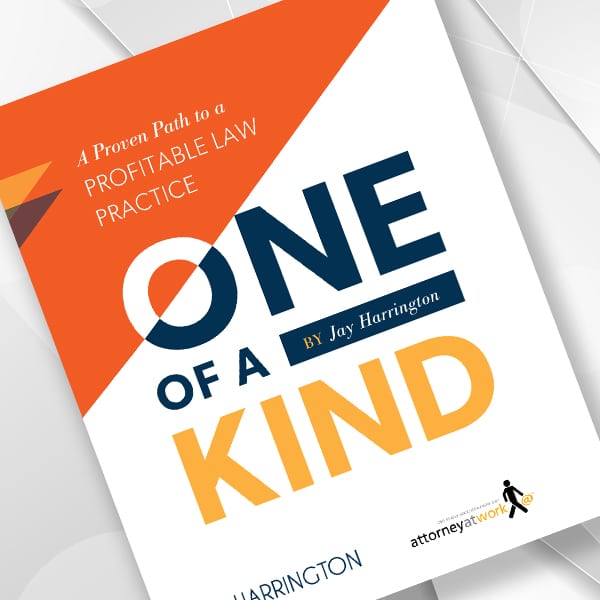If you want to take thought leadership marketing to the next level, you need to up your game:
- Broaden your perspective.
- Try different content formats.
- Befriend editors and reporters.
- Loosen up and show some personality!
The first step in becoming a thought leader is getting over your resistance and starting to hit publish on your blog posts, podcast episodes, and LinkedIn status updates. The reason many lawyers publish inconsistently — or abandon content marketing efforts altogether — is because they perceive the results, or lack thereof, as not worth the effort. The term “content fatigue” is often used to describe exasperated general counsel being bombarded with client alerts and webinar invitations, but it can just as aptly apply to lawyers whose content marketing efforts have stalled.
As with any area of professional development you want to improve, creating high-impact content requires thinking strategically, developing new skills, and making it a consistent practice. You can’t keep doing the same things and expect different results. If you want to take your results to the next level, you need to up your game. Just as LeBron James has continually improved his jump shot to remain among the NBA’s top scorers, and The Beatles reinvented themselves with nearly every album, you can become a high performer — and recognized thought leader in your field — by adding some new tools of the trade.
1. Read Outside of Your Area of Expertise
Thought leaders are perceived as experts, typically in narrow domains. While expertise is critical, the endless pursuit of the “expert” mantle can shrink the lens through which you see the world. As a result, your content runs the risk of becoming myopic. Broaden your perspective to combat against falling into a creative rut. Growth as a content creator requires exposure to novelty.
Almost all the content I consume is outside my area of expertise. Despite the subject matter being off-topic, I’m nearly always exposed to new ideas when going down new rabbit holes that can be analogized and made applicable to my own domain. In my experience, seeking out fresh ideas won’t weaken your expertise. It will deepen it. Most importantly, it will allow you to convey your expertise in a way that captures your audience’s attention.
Draw insights and inspiration from behavioral economics and philosophy. Read classic novels. Listen to great music. Remember, there are no new ideas — just new ways to package existing ones through your unique perspective.
2. Experiment With Different Formats
The standard legal blog post or article tracks the format of a legal motion or brief: introduction, background facts, analysis and conclusion. Write what you know and, apparently, how you know. However, writing in a manner that is indistinguishable from everyone else you are competing with for clicks and attention rarely leads to distinguishable results.
Instead, start experimenting with different styles and formats. Rather than merely summarizing the outcome of a significant court decision, begin with the conclusion and then describe 10 important, actionable takeaways for your blog’s readers. Create a weekly “Five Bullet Friday” article series that briefly touches on five key trends or developments in an industry. Or, if all you ever do is write, record a short video and post it on LinkedIn.
There is no equivalent to the Federal Rules of Civil Procedure in content marketing. There’s nothing stopping you from creating content in a style or format that is unique and colorful. If you want to stand out from the crowd, you can’t be afraid to take a few risks.
3. Cultivate Relationships With Editors and Reporters
No matter how prolific you may be in creating content, anonymity, not overexposure, should be your biggest concern. The often-overlooked path to gaining greater mindshare is developing relationships with the gatekeepers who hold the keys to the audience you seek.
Instead of defaulting to publishing all your content on your firm’s various platforms, reach out to the overworked and underappreciated reporters and editors at the trade publications who focus on creating content for the industries you focus on as well. Help them to do their jobs by contributing your content for their publications, and sharing your expert commentary for stories they’re working on. Thought leaders tend to be highly visible in the media. With a bit of extra effort, you can get your insights in front of key decision-makers, too.
4. Show Some Personality
If clients “hire the lawyer, not the law firm,” then why is so much legal content marketing devoid of personality? From blog posts to website bios, lawyers tend to opt for a formal, third-person writing style in which the writer is disconnected from the subject (even when, in the case of bios, they are the subject).
While not appropriate for every instance, don’t be afraid to have a go at a more informal writing style. Adopt a more personal tone that reflects your conversational voice. Choose simple words and short sentences. Use the first-person (I) and second-person (you) point of view. Complexity breeds confusion. Add more signal and reduce the noise from your content with a simpler approach.
Illustration ©iStockPhoto.com
ONE OF A KIND
A Proven Path to a Profitable Law Practice
Almost every lawyer wants to command higher rates and attract more clients. But many are stuck pursuing ineffective strategies. Others don’t even know where to start. In his popular book, lawyer-turned-legal marketer Jay Harrington lays out a path for building a one of a kind, profitable niche practice.


















